Technological advancements have changed the world of home security—with smart doorbells remaining a popular feature and upgrades to standard security cameras giving people an extra pair of eyes. In fact, the home security system market’s worth is projected to hit $74.8 billion by 2023, with security cameras expected to comprise nearly $10 billion of it.
Considering the expected growth, how many people already have cameras installed in their homes? How often do homeowners check their feeds, and what are the most common things they’ve revealed? We surveyed 985 people about their experiences and perceptions of security systems. Read on to see what they had to say.
Watchful eye
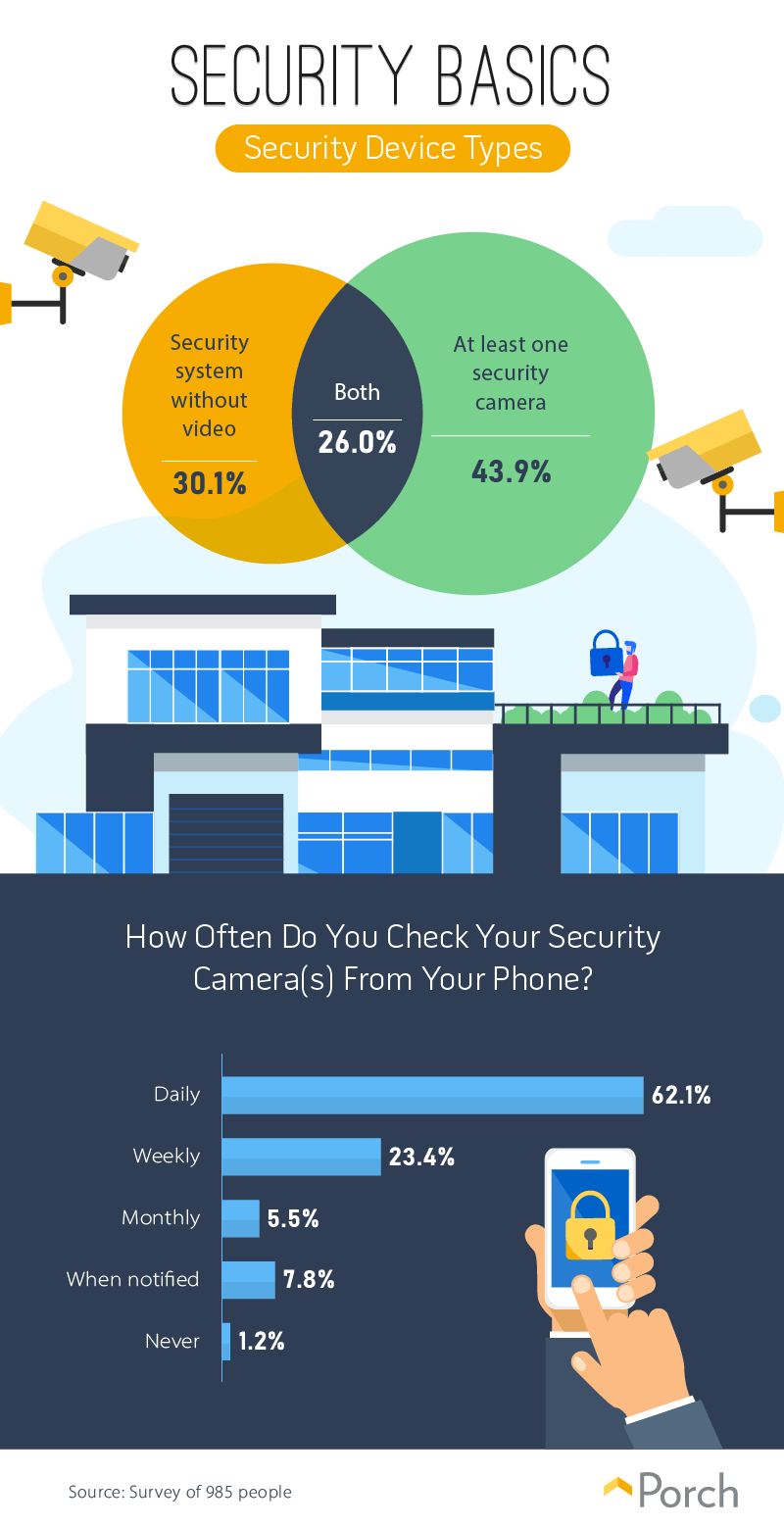
Everyone approaches home security differently. While some people feel safe behind a locked door, others need eyes on every corner of their property. Nowadays, home security comes with numerous devices, all connected to meet homeowners’ wants.
Compared to just 30 percent of people with nonvideo security systems, 44 percent of respondents reported having at least one security camera. Twenty-six percent of people, however, installed both a security system and cameras.
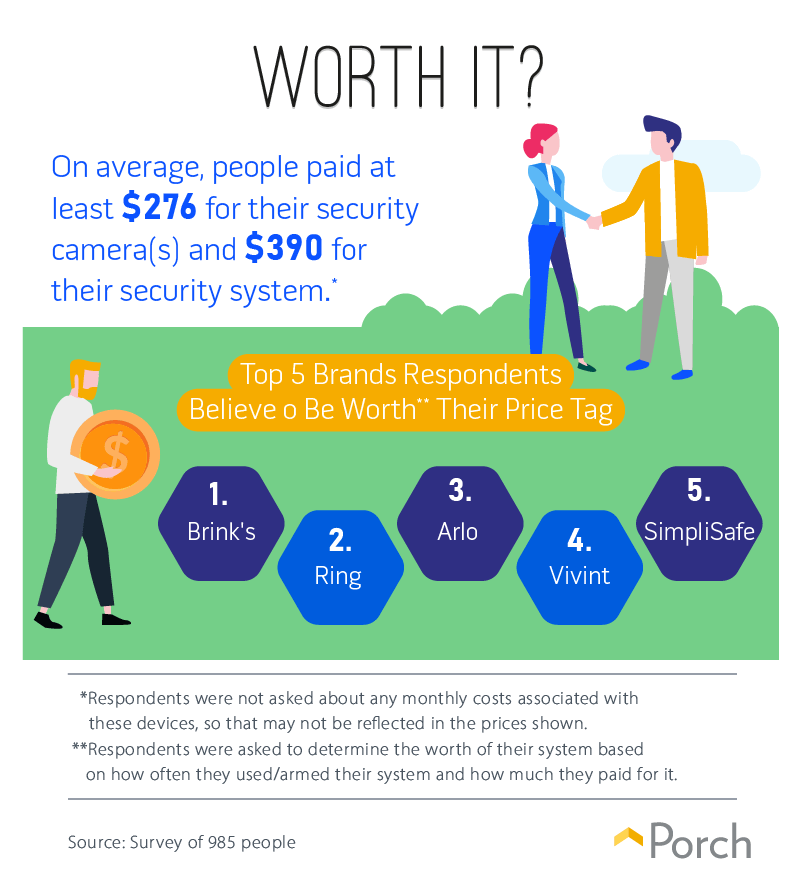
People paid over $100 more, on average, for their security systems compared to security cameras. And when it came to the brands Brink’s, Ring, Arlo, Vivint, and SimpliSafe, respondents believed the products were worth what they paid.
Regardless of the security system, technology has made safety more accessible. People no longer have to wait for a call from the alarm company alerting them of an intruder—instead, they can now open an app on their phone and view the live feed for themselves.
In fact, for the majority of people, checking their security cameras from their phone was a daily routine. Compared to just 23.4 percent of people who checked their feeds weekly, 62.1 percent said they checked their security camera feed from their phone daily.
Have you seen them?
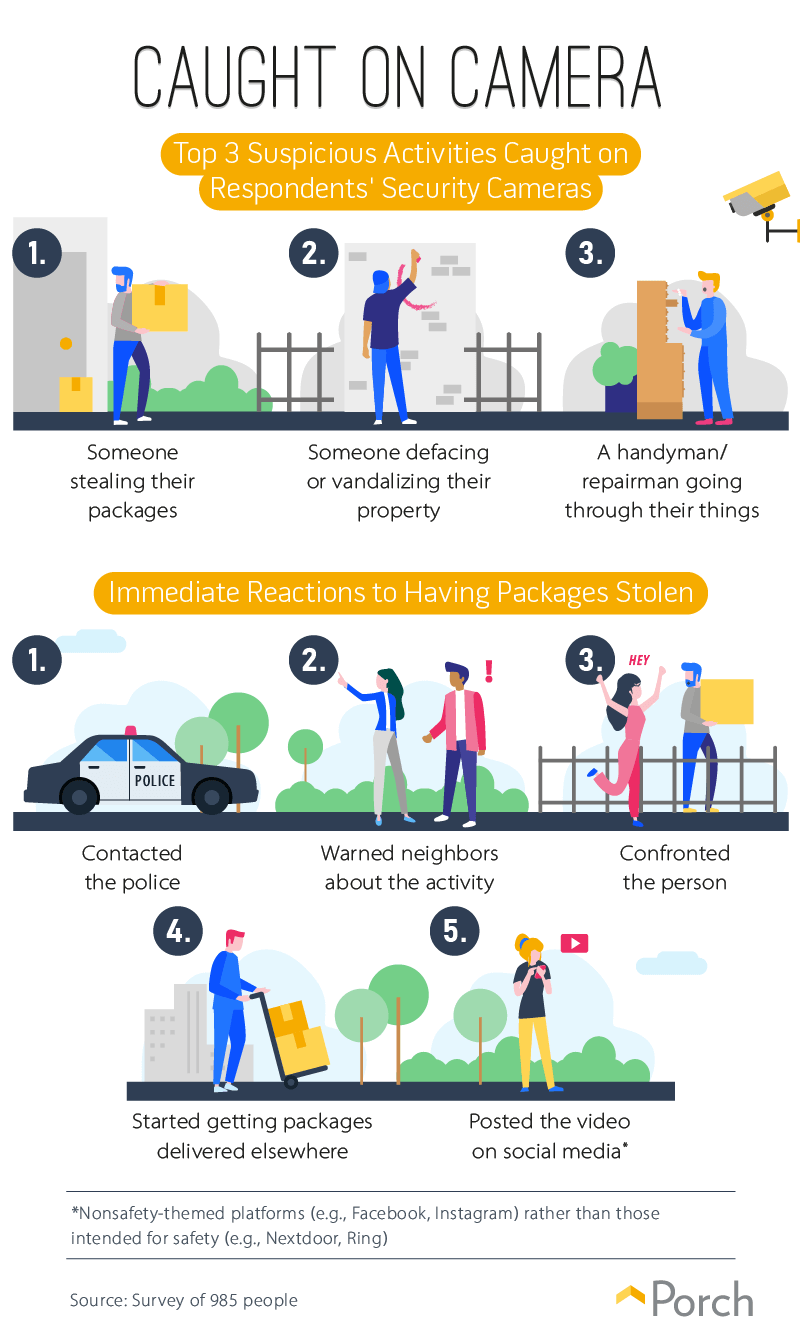
The entire point of home security is to prevent, or at least deter, crime, but crime—both violent and related to property—has sharply declined over the last 25 years. Still, security camera owners tended to check their feeds daily and found suspicious activity such as someone stealing their packages, defacing or vandalizing their property, or handymen going through their things. While overall crime rates have declined, there’s been an uptick in stolen packages likely thanks to online shopping. But security cameras have made these crimes easier to solve. Immediately after seeing someone steal their packages, people said they contacted the police, warned their neighbors, and even confronted the perpetrator.
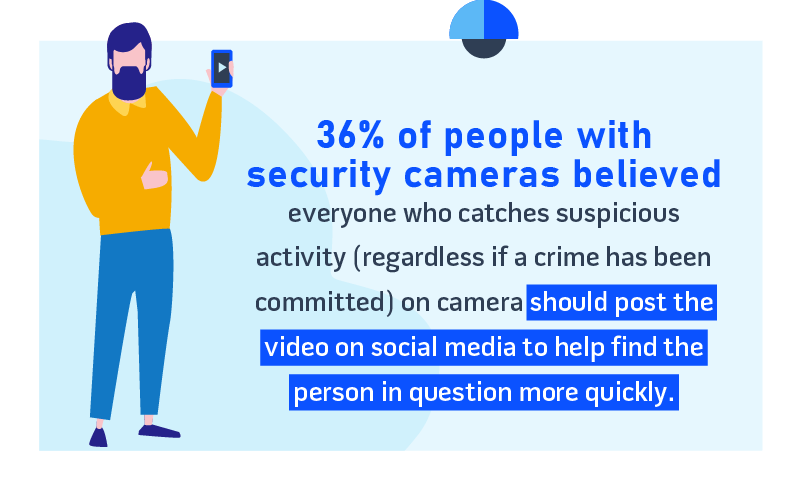
However, one move, in particular, has been incredibly helpful in finding thieves: posting videos on social media. Thirty-six percent of people with security cameras believed everyone who catches suspicious activity (regardless if a crime is committed) should post the video on social media in the hopes that the person can be found quicker. Posting security videos on social media has become so popular and effective that Ring, the maker of smart doorbells, used sponsored ads on Facebook to help identify a woman who attempted to break into a vehicle.
Full coverage
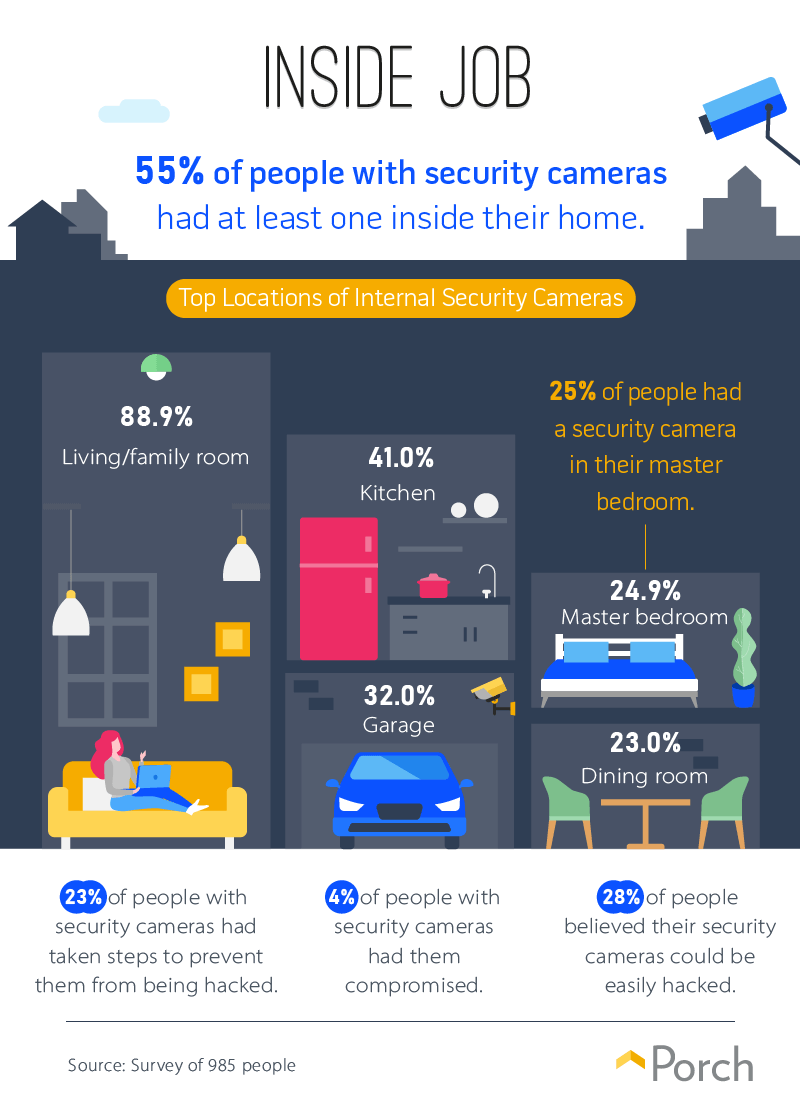
Outdoor security cameras may help catch package thieves, but what about crimes committed inside the home? Over half of people with security cameras said they had at least one inside their home, with nearly 90 percent installing one in their living or family room. Kitchens and garages were also common places for security cameras, but 25 percent of people even placed one in their master bedroom.
Home security cameras may deter people from breaking and entering, but they don’t deter hackers—on the contrary, they may attract them. With just a push of a few buttons, hackers can access live camera feeds and even gain access to the entire home security system. Luckily, there are plenty of ways to protect devices, but only 23 percent of people with security cameras had taken any steps to protect them.
Privacy, please

Aside from hackers, there are numerous things to consider when installing home security cameras. One is privacy. The majority of people said they did not tell handymen, pet sitters, or babysitters about their security cameras, but when it came to friends, family, and significant others, transparency was more common. Still, nearly 70 percent of people didn’t tell their friends, while nearly 60 percent and almost 52 percent of people didn’t tell their family members or significant others about their cameras, respectively.
The problem is that some states have laws mandating what can and cannot be recorded and whether the owner must disclose the presence of a camera. Being aware of the laws in your state is vital to protecting your home from suspicious activity while also protecting yourself from going against the law.
Legality is a solid reason to forgo security cameras inside the home, but respondents cited other reasons against cameras. While millennials and Gen Xers were the most likely to say they didn’t want to be recorded inside their own home, baby boomers thought their home was safe enough without cameras on the inside. Hacking was also a concern for 43.6 percent of baby boomers and nearly 40 percent of millennials, while only around 16 percent of all generations were concerned about their spouses using the cameras to spy on them.
Smart and easy
Home security evolves every day. In fact, cameras are now small enough to hide in doorbells and thermostats, and live feeds can be viewed from a smartphone. While people who utilize security cameras seem to be supportive of the features, often using them daily, many people are also aware of the risks. However, most owners seem to think security cameras are worth the price.
Whether you already own a security system, are in need of an upgrade, or are new to smart technology, Porch is your pro. From security installations to nearly every other home project, just tell us what you need, and we’ll get the job done or match you with a professional who can. Plus, all of our professionals have been screened, so you can rest assured knowing the job will be done safely and securely. To learn more, visit us online today.
Methodology and limitations
The data presented in the above study were gathered through the use of the Amazon Mechanical Turk service. A total of 985 responses were gathered, with 461 coming from men (with a 5 percent margin of error), 522 coming from women (with a 4 percent margin of error), and two coming from people who chose to identify as neither. 177 of the responses were from baby boomers (with a 7 percent margin of error), 403 were from Generation X (with a 5 percent margin of error), and 405 were from millennials (with a 5 percent margin of error.)
To qualify for this survey, respondents had to have at least one type of home security system or security camera. All data presented rely on self-reporting, and there can be issues with self-reported data, such as telescoping and exaggeration. To combat these, an attention-check question was used. If respondents failed the attention check, they were not allowed to finish the survey and were not counted in the data. Monthly costs of security cameras and/or systems were not taken into account when asking about the average amount paid for those systems.
Fair use statement
With all of the new smart technology, finding the right home security system to fit your needs can be difficult. Understanding the pros and cons of security cameras can help make the decision more clear. If you know someone considering an upgrade to their home security, feel free to share our study with them. The graphics and content found here are available for noncommercial reuse. All we ask is that you link back to this page so that your readers get all the necessary information and our contributors receive proper credit.

